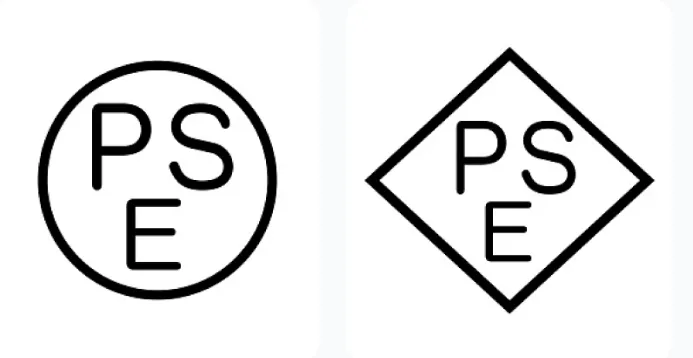
Canada ISED Wi-Fi and Bluetooth RSS-247 Issue 4 Test
On JULy 24, 2025, Innovation, Science and EconoMIC Development Canada (ised) officially released Radio Standards Specification RSS-247 Issue 4. The full title of this standard is “Digital Transmission Systems, Frequency Hopping Systems and Licence-Exempt Local Area Network Devices Operating in the Bands 902-928 MHz, 2400-2483.5 MHz, 5150-5350 MHz and 5470-5895 MHz.”This update introduces significant changes to the certification requirements for wireless devices. Below is an overview of the key content and impact analysis:

Major Technical Changes:
1. Unrestricted 5600-5650 MHz Band:
Previous operational restrictions on devices in the 5600-5650 MHz band have been removed, providing a broader usable spectrum range for Wi-Fi and other wireless devices.
2. Clarification of Hybrid Equipment Classification:
New requirements strictly distinguish “Hybrid Equipment” (integrating both FHS and DTS functionalities) from “Combined Equipment” (physically combined FHS and DTS modules only), with each category requiRED to independently meet its certification criteria.
3. Simplified Antenna Gain Calculation:
The previous requirement for separate directional antenna gain calculations has been removed. Instead, measurement procedures directly reference the ANSI C63.10 standard and the FCC Knowledge Database (KDB).
4. New Frequency Band Operation Specifications:
Strengthened instructions for licence-exempt LAN (LE-LAN) devices operating in the 5150-5250 MHz and 5250-5350 MHz bands, with explicit limits on spurious emissions defined for different bands (e.g., the 5250-5350 MHz band).
5. Transmission Power Control (TPC) Requirement Adjustments:
New devices must report the implementation status of TPC functions. Additionally, power control parameters for the 5150-5250 MHz and 5250-5350 MHz bands have been updated.
6. Labeling and Indoor Emission Limits:
Devices intended for indoor use are required to label spurious emission limits to prevent interference risks caused by outdoor usage.
Major Editorial Changes:
1. Added frequency ranges to the standard title.
2. Revised Chapter 6 to group frequency hopping system (FHS) device requirements by bands: 900 MHz, 2.4 GHz, and 5.8 GHz.
3. Clarified Dynamic Frequency Selection (DFS) requirements by amending section 7.3.6.3, specifying technical requirements for client devices without radar detection capability.
4. Document formatting and structural changes including adjustments to several sections and added clarifications to improve overall readability.
Effective Date, Mandatory Enforcement, and Transition Period:
1. Effective Date:
RSS-247 Issue 4 was published and became effective on July 24, 2025, on the ISED website.
2. Transition Period:
Six months from July 24, 2025, to January 24, 2026.
① During the transition period, certification applications may be submitted under either RSS-247 Issue 3 or Issue 4.
② After the transition period, only applications complying with Issue 4 will be accepted. Devices manufactured, imported, distributed, leased, sold, or offered for sale in Canada must comply with Issue 4 requirements.
Applicable Device Scope:
This standard covers certification requirements for the following four categories of systems:
1. Digital Transmission Systems (DTS):
Devices operating on fixed frequency bands.
2. Frequency Hopping Systems (FHS):
Devices such as Bluetooth and some industrial remote controls.
3. Hybrid Systems:
Devices integrating both DTS and FHS functions.
4. Licence-Exempt Local Area Networks (LE-LAN):
Wi-Fi routers, IoT endpoints, and similar devices.
Frequency Band Breakdown:
Key frequency bands include:
5150-5250 MHz, 5250-5350 MHz, 5470-5725 MHz, 5725-5850 MHz, and 5850-5895 MHz.
The release of RSS-247 Issue 4 marks a further refinement of Canada's regulation for licence-exempt band devices, with core changes including the release of the 5600-5650 MHz band and enhanced management of hybrid devices. The new regulation takes effect immediately. Exporters are advised to promptly initiate certification processes, prioritize evaluating product frequency design and hardware architecture, and develop compliance strategies based on certification methods (ic id or Supplier’s Declaration of Conformity - sdoc). Attention to local representation and labeling requirements is critical to mitigate trade risks.
ised certification is a mandatory legal requirement for products entering the Canadian market. JJR Laboratory, recognized by ISED, offers ISED (IC-ID) certification services and welcomes inquiries!
Email:hello@jjrlab.com
Write your message here and send it to us
 What is Amazon TIC and How Can Sellers Achieve Com
What is Amazon TIC and How Can Sellers Achieve Com
 2026 Battery UN38.3 Certification (Test Report) &a
2026 Battery UN38.3 Certification (Test Report) &a
 What is the IEC 62680 Standard? Compliance Interpr
What is the IEC 62680 Standard? Compliance Interpr
 Amazon Japan December Compliance Requirements
Amazon Japan December Compliance Requirements
 How to Check a CPSC-Accepted Laboratory?
How to Check a CPSC-Accepted Laboratory?
 WEEE Registration for Waste Electrical &Electr
WEEE Registration for Waste Electrical &Electr
 MSDS Chemical Safety Testing
MSDS Chemical Safety Testing
 What Are the Differences Between UK REACH and EU R
What Are the Differences Between UK REACH and EU R
Leave us a message
24-hour online customer service at any time to respond, so that you worry!




